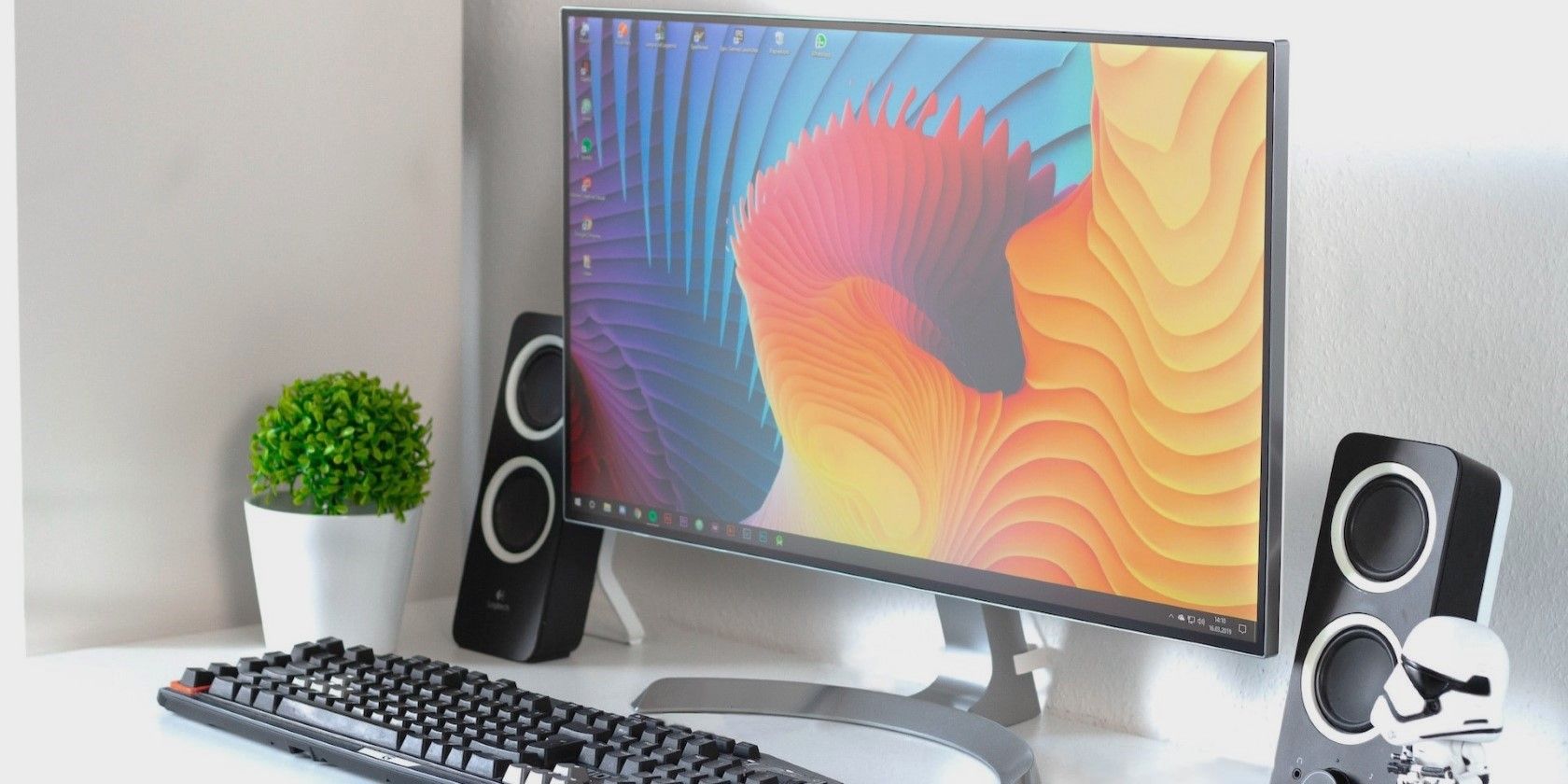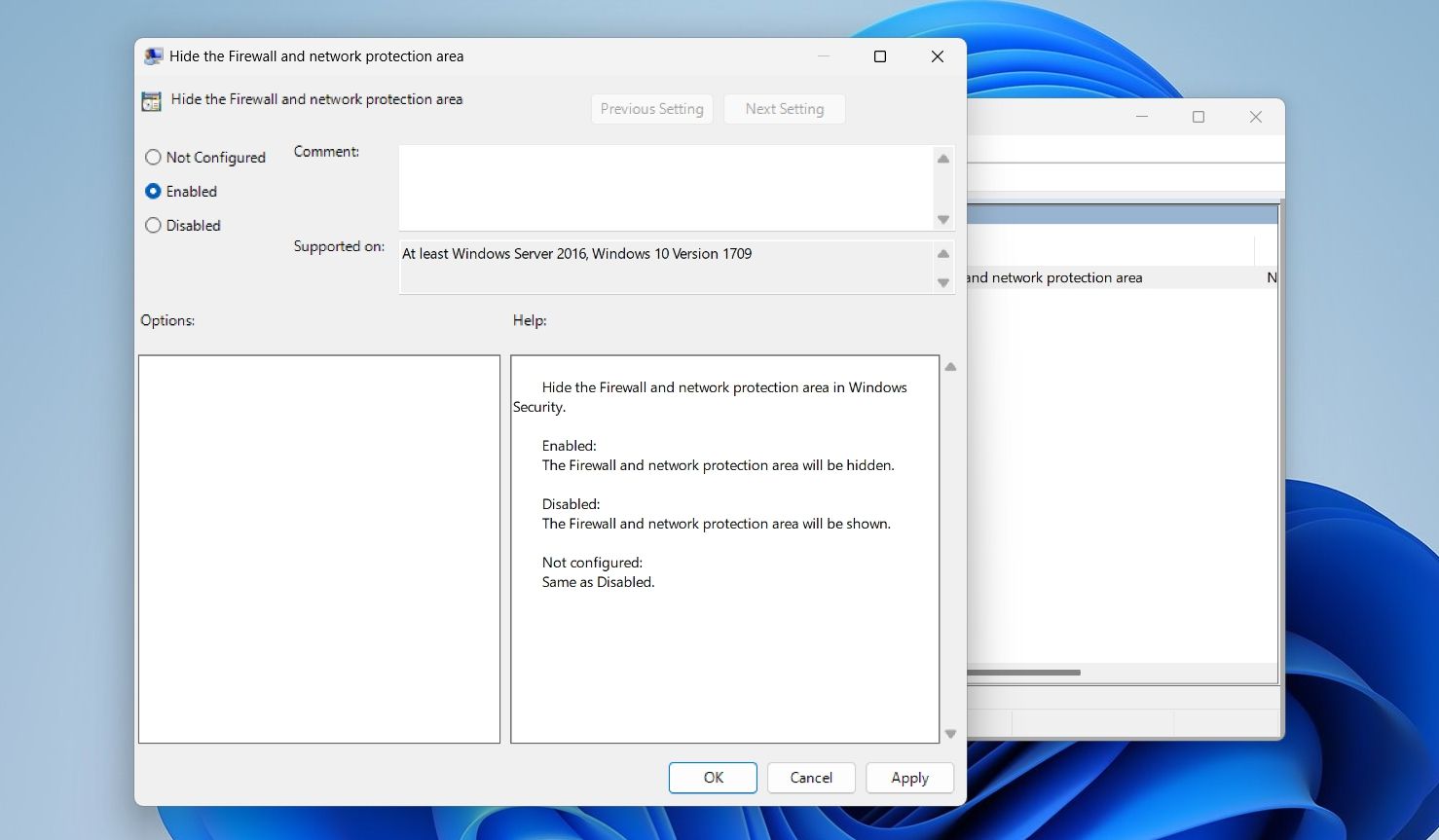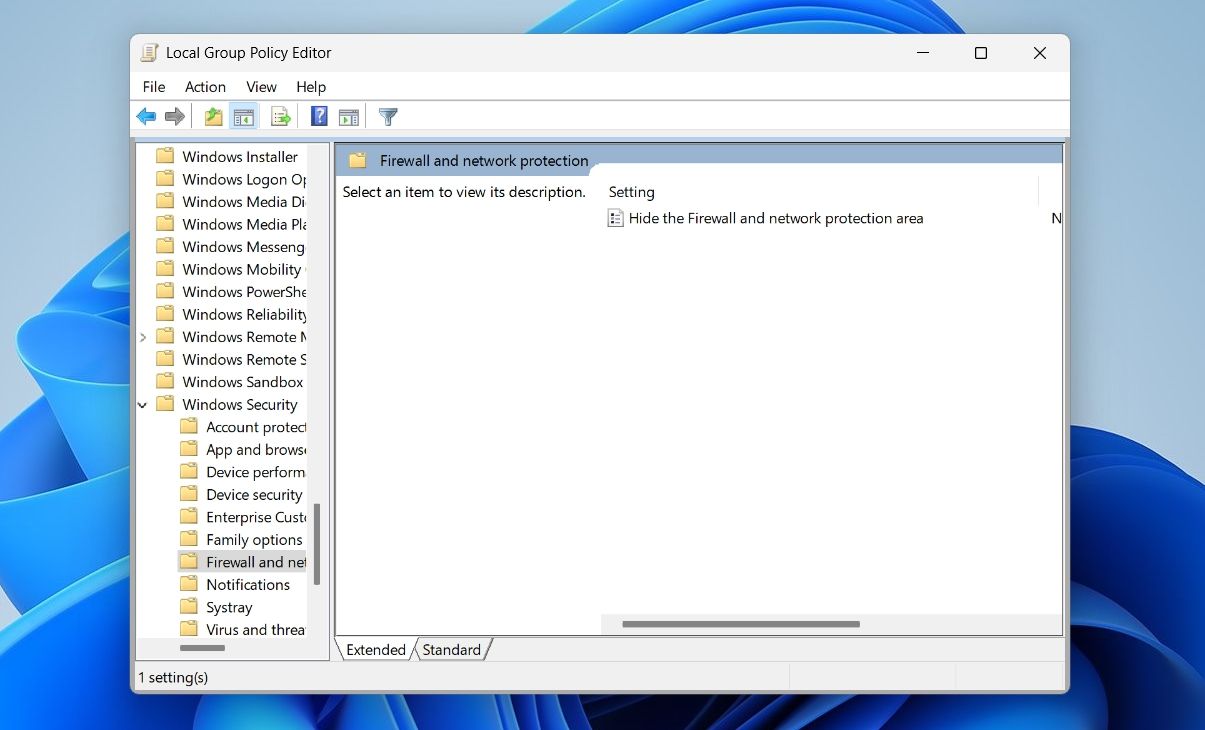
Manipulating Windows Defense Display Settings

Manipulating Windows Defense Display Settings
Do you share your computer with someone else and not want them to access your Firewall & Network protection settings? If yes, then this is the place where you need to be.
In this article, we’ll see how you can hide or show the Firewall & Network protection settings area in Windows Security.
Why It’s Important to Hide the Firewall & Network Area in Windows Security
Windows Security is your one-stop security center to protect your personal data and network settings. It is divided into different security sections for better and faster security management.
One of these is the Firewall & Network protection area. This is where you can view the Microsoft Defender Firewall status and the type of networks your device is connected to. You can also use it toblock or allow an app through the firewall and reset firewall settings.
Therefore, keeping this area hidden is important, especially if you share your computer with someone else. You must be signed in as an administrator if you want to hide the Firewall & Network area, so check outhow to enable or disable the built-in administrator account on Windows if you need to turn it on.
How to Hide or Show Firewall & Network Area in Windows Security Using the Local Group Policy Editor
The Local Group Policy Editor is a utility using which you can manage parts of Windows, enforce specific policies, and automate repetitive tasks like mapping printers. This utility is reserved for the Professional, Enterprise, and Education editions of Windows. Thus, if you are using the Home edition, check out our guide on how toaccess the group policy editor in Windows Home .
Nevertheless, here’s how to use Local Group Policy Editor to hide the Firewall & Network area in Windows Security:
- Press theWin + R hotkeys to open the Run dialog box.
- Typegpedit.msc and pressEnter . It’ll open the Local Group Policy Editor.
- Head towards the following location:
Computer Configuration > Administrative Templates > Windows Components > Windows Security > Firewall and network protection - Double-click theHide the Firewall and network protection area to open its edit window.

- Select theEnabled option.

6. ClickApply >OK to save the changes.
That’s it. You might need to restart your computer for the changes to take effect.
If you want to unhide the Firewall & Network area, open the Local Group Policy Editor again and repeat the above steps. At the very end, select theDisabled option and then save the settings.
Keep Your Network Settings Safe and Secure
It’s very important to hide the Firewall & Network protection area if you don’t want others to view or change the important settings of your computer. You disable this area using the Local Group Policy Editor, as mentioned above.
Meanwhile, you might be interested to know different ways to open the Windows Security app.
Also read:
- [Updated] Top 10 Premium Android & PC-Compatible Video Editors for 2024
- 2024 Approved The Complete Guide to Mastering Games with KineMaster Android
- Dealing with Steam Authentication Errors: A Rust-Powered Windows Approach
- Ensure Your Windows Screenscape Remains Same
- Evade Windows Sign-In Sequence with Short-Term Profiles
- Fixing a Non-Functional Xbox Controller for PC
- In 2024, Full Guide to Unlock Your Realme 10T 5G
- In 2024, How to Transfer Everything from Apple iPhone SE to iPhone | Dr.fone
- IPhone Landscape Lock Issue? Here Are Some Fixes That Might Help
- Quick and Easy Channels Personalize Your YouTube URL Now, In 2024
- Sedona, Psychic Energy Vortexes | Free Book
- Strategies to Correct OpenGL Error 3 in Nvidia GPUs (Win10/11)
- Swift System Solutions: The Essential 10 Tools
- Troubleshooting Tips: Fixing the Elusive Msvcr80.dll File Not Detected Issue
- Title: Manipulating Windows Defense Display Settings
- Author: David
- Created at : 2025-01-04 19:09:32
- Updated at : 2025-01-06 19:10:04
- Link: https://win11.techidaily.com/manipulating-windows-defense-display-settings/
- License: This work is licensed under CC BY-NC-SA 4.0.
